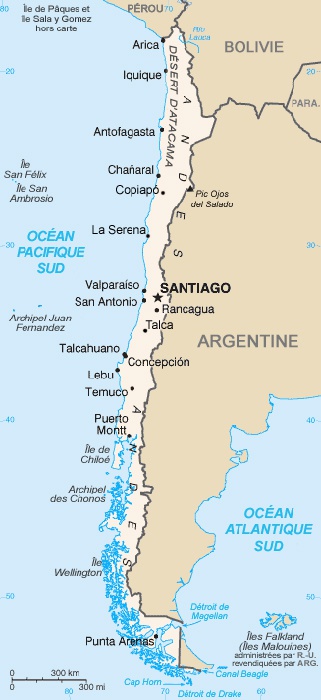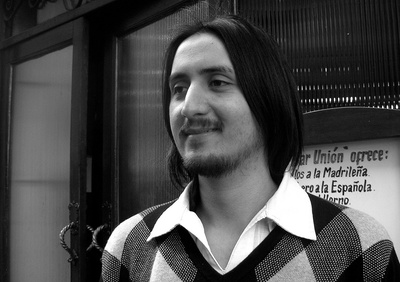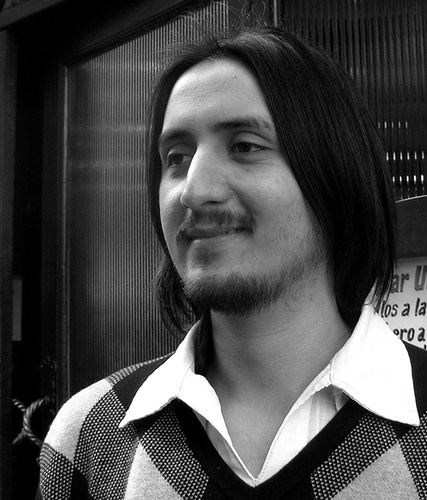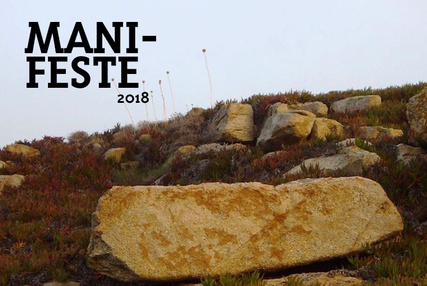Réplicas

 « Je viens du Chili, annonce d’emblée Fernando Munizaga, comme une évidence. Pour les Chiliens, les tremblements de terre ne sont pas un concept abstrait et lointain, ils sont une réalité vécue au quotidien. Le Chili se situe en effet dans l’une des zones sismiques et volcaniques les plus actives au monde, à la convergence de deux plaques tectoniques majeures : tous les jours ou presque, la terre tremble (ne serait-ce que légèrement), et c’est là qu’ont eu lieu les pires séismes enregistrés. On vit dans l’expectative de ces grands cataclysmes, comme le pays en a tant connu par le passé, et comme il en connaîtra certainement dans l’avenir – on estime généralement qu’il y a au Chili un séisme de plus de 7 (et jusqu’à plus de 9) sur l’échelle de Richter tous les dix ans.
« Je viens du Chili, annonce d’emblée Fernando Munizaga, comme une évidence. Pour les Chiliens, les tremblements de terre ne sont pas un concept abstrait et lointain, ils sont une réalité vécue au quotidien. Le Chili se situe en effet dans l’une des zones sismiques et volcaniques les plus actives au monde, à la convergence de deux plaques tectoniques majeures : tous les jours ou presque, la terre tremble (ne serait-ce que légèrement), et c’est là qu’ont eu lieu les pires séismes enregistrés. On vit dans l’expectative de ces grands cataclysmes, comme le pays en a tant connu par le passé, et comme il en connaîtra certainement dans l’avenir – on estime généralement qu’il y a au Chili un séisme de plus de 7 (et jusqu’à plus de 9) sur l’échelle de Richter tous les dix ans.
En dessous de six, on fait comme s’il ne s’était rien passé ou presque. Certes, on sent les secousses – on essaie même d’en évaluer la force à vue de nez, comme on le ferait de la température au matin. De même les sismologues sont régulièrement interviewés dans les médias à l’instar des météorologues – offrant chacun une forme de prévision plus ou moins fiable –, cela permet de relativiser la menace en la rationalisant. Aujourd’hui, les progrès des techniques de construction sont tels que ces secousses mineures ne font plus de dégâts ou presque. Cela ne les empêche pas d’avoir un effet silencieux : est-ce la réplique du dernier cataclysme ? Ou le précurseur du prochain ?
Selon le moment de la journée, les sensations diffèrent. C’est particulièrement saisissant la nuit. Lors du dernier grand séisme en 2010 – qui fut d’ailleurs mon premier au-dessus de 7 sur l’échelle de Richter –, c’était justement en pleine nuit et j’ai été très étonné d’entendre, avant même la secousse, des sons très graves, comme un grondement menaçant. Je n’avais jamais ressenti cela auparavant : le son se propageant plus vite dans les sols que dans l’air, on « entend » le tremblement de terre, avant qu’il n’arrive !
Après le cataclysme, les dégâts ne sont pas uniquement humains ou matériels : ils sont aussi psychologiques. C’est un traumatisme commun, dont découle un stress post-traumatique partagé. On peut évoquer la chose avec des inconnus, des années plus tard. Il n’est pas rare au cours d’une conversation qu’on se demande ce qu’on faisait, où on était, au moment d’un grand séisme. Et tout le monde s’en souvient, bien sûr. La temporalité humaine se heurte à une temporalité géologique millénaire.
 Le phénomène nourrit toute sorte de mysticismes : les civilisations précolombiennes interprétaient ces tragédies répétées (séismes, tsunamis, volcans) selon diverses légendes, mythes fondateurs et autres apocalypses. Le christianisme n’est pas en reste : il s’est approprié cette tradition cataclysmique par le syncrétisme dont il est coutumier. En 1647, alors que le Chili était encore une colonie espagnole, un séisme a intégralement détruit la ville de Santiago. Un quart de la population de la ville a trouvé la mort – sous les décombres, et dans les épidémies qui ont suivi. Les blessés étaient innombrables. Dans ce champ de ruine, un seul mur avait résisté : celui dans l’église Saint-Augustin sur lequel était posé un Christ en croix dont la couronne d’épines était tombée autour de son cou, comme un collier. La légende dit que, chaque fois qu’on essayait d’enlever cette couronne pour la remettre sur la tête du Christ, la terre tremblait (sans doute une réplique au séisme). Résultat, on la lui a laissée. Aujourd’hui encore, ce crucifix est fêté par une procession annuelle. Ainsi les cataclysmes profitent-ils à divers prophètes qui, pour mieux manipuler leurs ouailles, replacent la tragédie dans le fil d’un récit mythique afin de lui donner un sens et de leur redonner espoir. »
Le phénomène nourrit toute sorte de mysticismes : les civilisations précolombiennes interprétaient ces tragédies répétées (séismes, tsunamis, volcans) selon diverses légendes, mythes fondateurs et autres apocalypses. Le christianisme n’est pas en reste : il s’est approprié cette tradition cataclysmique par le syncrétisme dont il est coutumier. En 1647, alors que le Chili était encore une colonie espagnole, un séisme a intégralement détruit la ville de Santiago. Un quart de la population de la ville a trouvé la mort – sous les décombres, et dans les épidémies qui ont suivi. Les blessés étaient innombrables. Dans ce champ de ruine, un seul mur avait résisté : celui dans l’église Saint-Augustin sur lequel était posé un Christ en croix dont la couronne d’épines était tombée autour de son cou, comme un collier. La légende dit que, chaque fois qu’on essayait d’enlever cette couronne pour la remettre sur la tête du Christ, la terre tremblait (sans doute une réplique au séisme). Résultat, on la lui a laissée. Aujourd’hui encore, ce crucifix est fêté par une procession annuelle. Ainsi les cataclysmes profitent-ils à divers prophètes qui, pour mieux manipuler leurs ouailles, replacent la tragédie dans le fil d’un récit mythique afin de lui donner un sens et de leur redonner espoir. »
Les enjeux technologiques, avec Carlo Laurenzi, Réalisateur en informatique musicale
Un dispositif de diffusion immersif
Pour donner ne serait-ce que le sentiment d’une « réplique » musicale du phénomène sismique, un dispositif immersif est incontournable. Il est ici obtenu grâce à deux systèmes de diffusion utilisés simultanément grâce à la nouvelle version (la cinquième) du Spat, gérée via l’interface Panoramix – deux systèmes mis au point par l’équipe Espaces acoustiques et cognitifs de l’Ircam-STMS. Un ensemble de haut-parleurs standards ainsi qu’un ensemble d’instruments de percussions, disséminés dans la salle et équipés chacun de résonateurs, agissent comme un réseau de 21 canaux capable de diffuser de façon locale ou globale le phénomène de la vibration – et susceptible en outre de faire voyager les sons autour du public, s’en approcher, s’en éloigner. Les répliques sismiques sont ainsi traduites, soit de manière plus musicale – dans une forme de stylisation du phénomène –, soit de manière plus environnementale.
Une soprano, un comédien et l’électronique
 Réplicas est l’occasion pour Fernando Munizaga de poursuivre le travail qu’il a engagé sur la voix, via l’analyse de l’intonation, de la phonétique et de la structure de la langue. Le texte, d’abord, fait l’objet d’un vaste travail avec la traductrice et membre de l’Outranspo (ouvroir de translation potencial, ainsi appelé en référence à l’Oulipo) Irène Gayraud, explorant différents types de traduction (phonétique, littérale, etc.). Captées notamment par des laryngophones, les voix de la chanteuse et du comédien sont analysées et disséquées (en isolant par exemple les bruits de bouche ou les bruits de gorge), puis éclatées dans l’espace au moyen du dispositif de diffusion.
Réplicas est l’occasion pour Fernando Munizaga de poursuivre le travail qu’il a engagé sur la voix, via l’analyse de l’intonation, de la phonétique et de la structure de la langue. Le texte, d’abord, fait l’objet d’un vaste travail avec la traductrice et membre de l’Outranspo (ouvroir de translation potencial, ainsi appelé en référence à l’Oulipo) Irène Gayraud, explorant différents types de traduction (phonétique, littérale, etc.). Captées notamment par des laryngophones, les voix de la chanteuse et du comédien sont analysées et disséquées (en isolant par exemple les bruits de bouche ou les bruits de gorge), puis éclatées dans l’espace au moyen du dispositif de diffusion.
Une voix off a également été synthétisée : artificielle et dématérialisée, c’est la voix de l’électronique, mais elle peut ainsi « répliquer » les caractéristiques vocales du comédien et de la chanteuse. Elle est parfois une imitation directe. Dans d’autres passages, elle n’en donne qu’une « impression musicale » en interaction avec les instruments – impression obtenue au moyen d’une technique de musaïking : comme une autre manière de « répliquer » aux deux protagonistes sur scène…
par Jérémie Szpirglas, journaliste et écrivain
Biographie
Fernando Munizaga
Fernando Munizaga (Chili, né en 1986) suit des études de guitare puis de composition à l’université catholique du Chili. Après avoir obtenu sa licence en guitare, il achève un second cycle supé…




